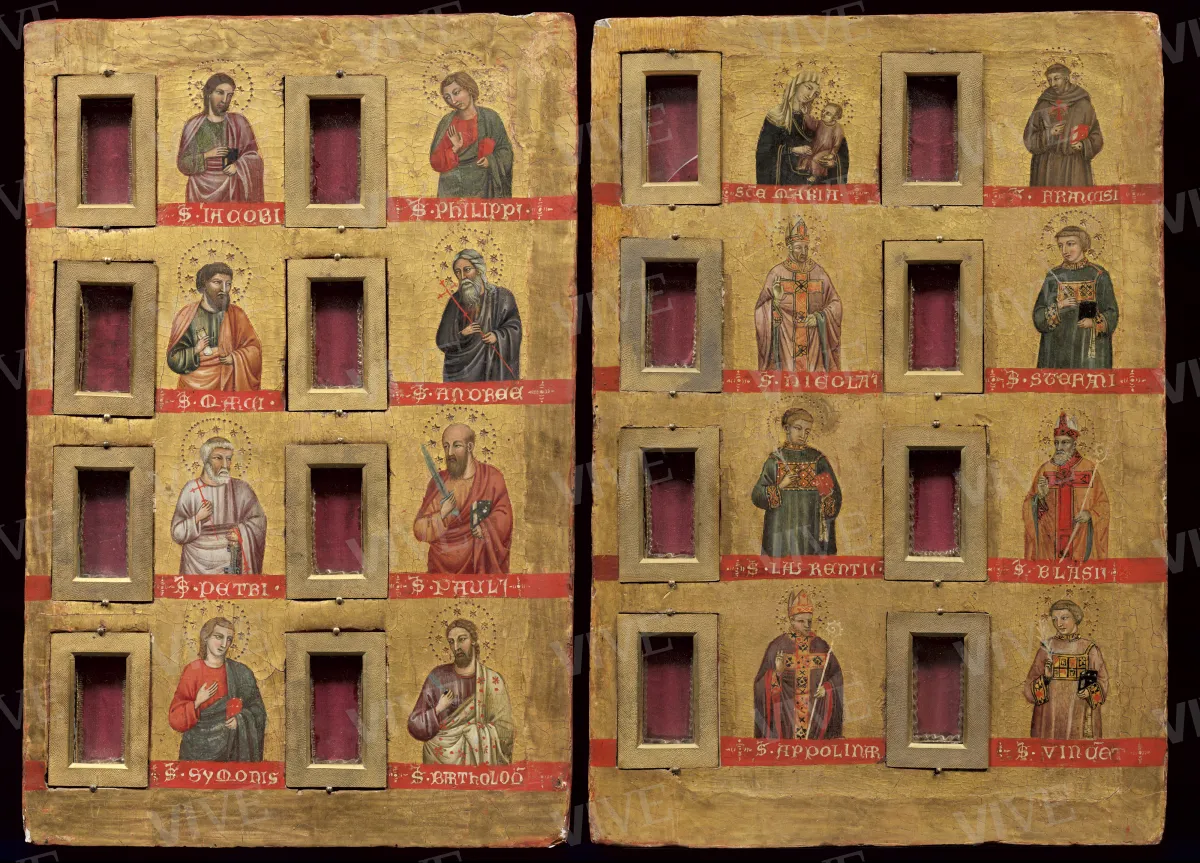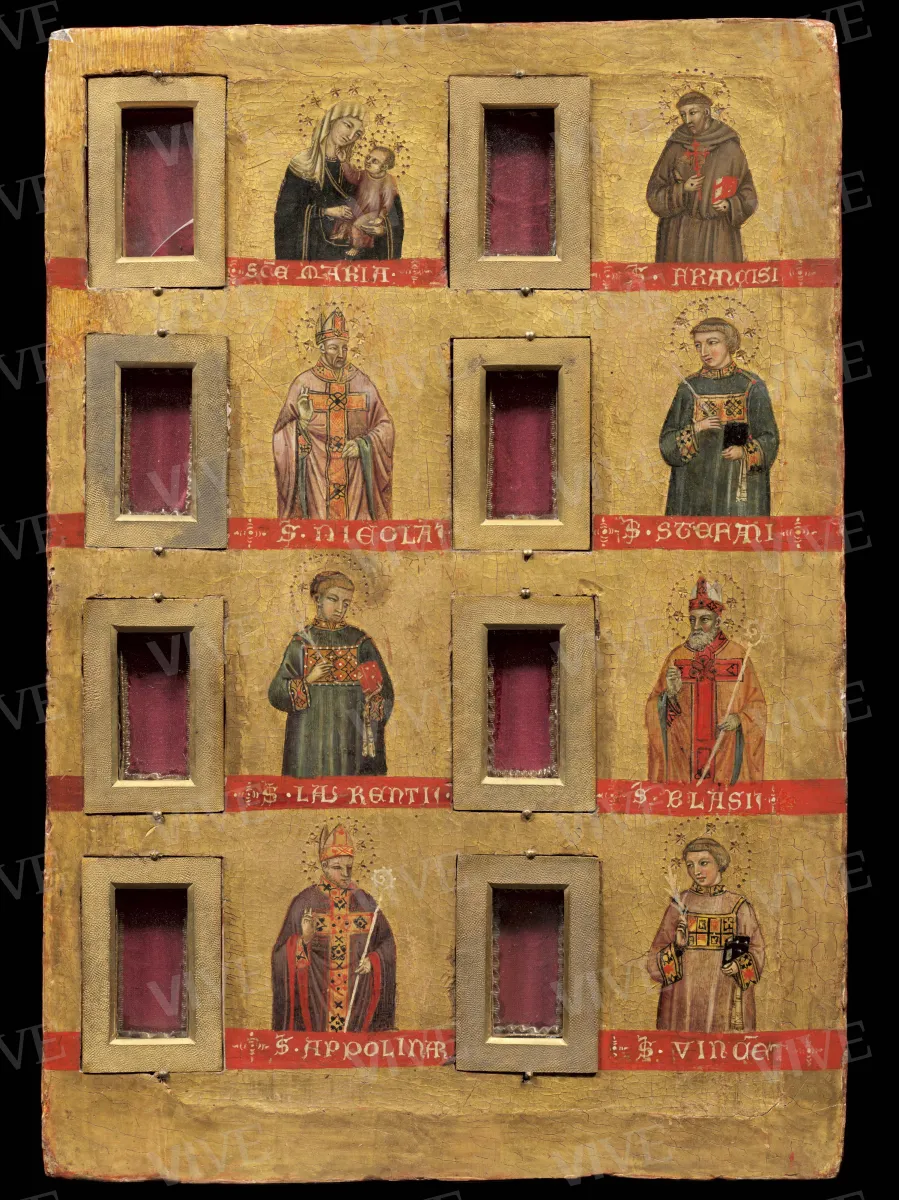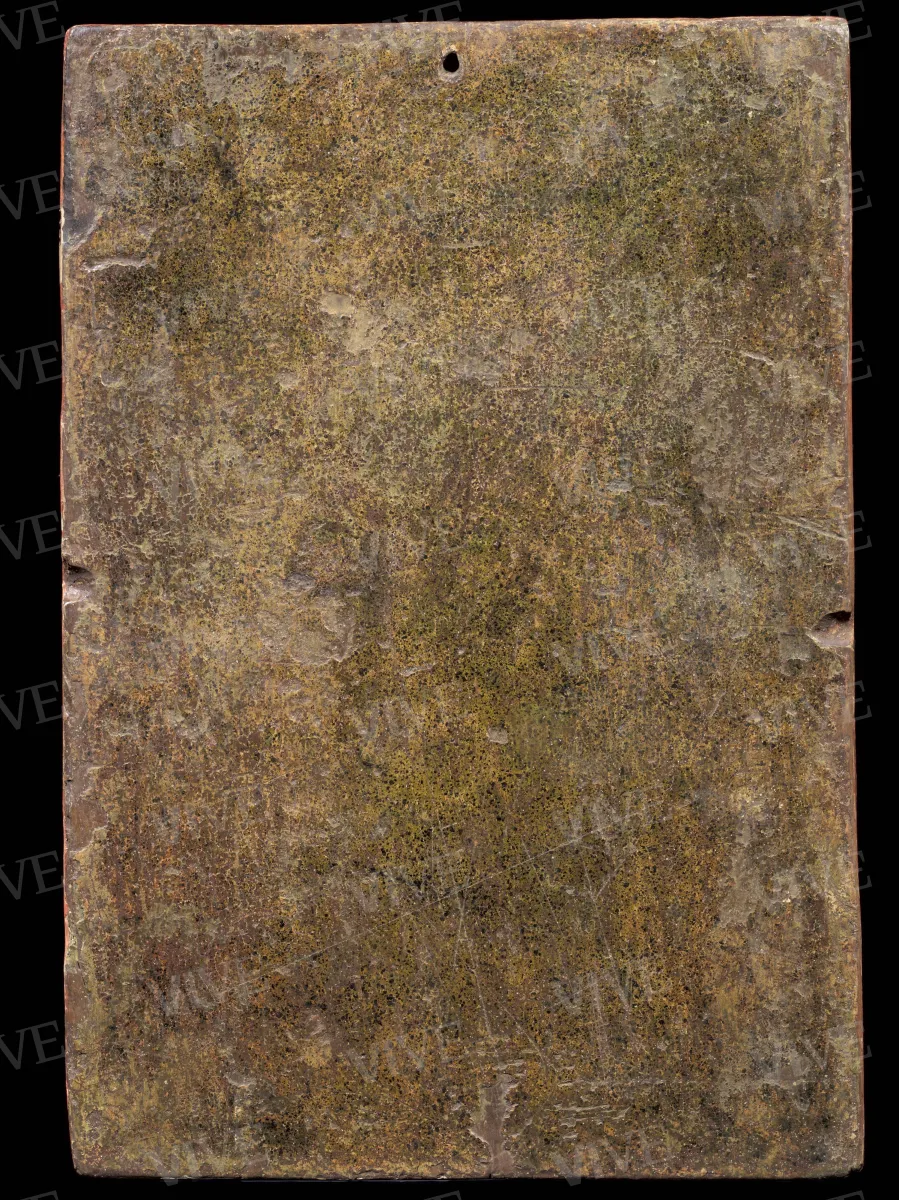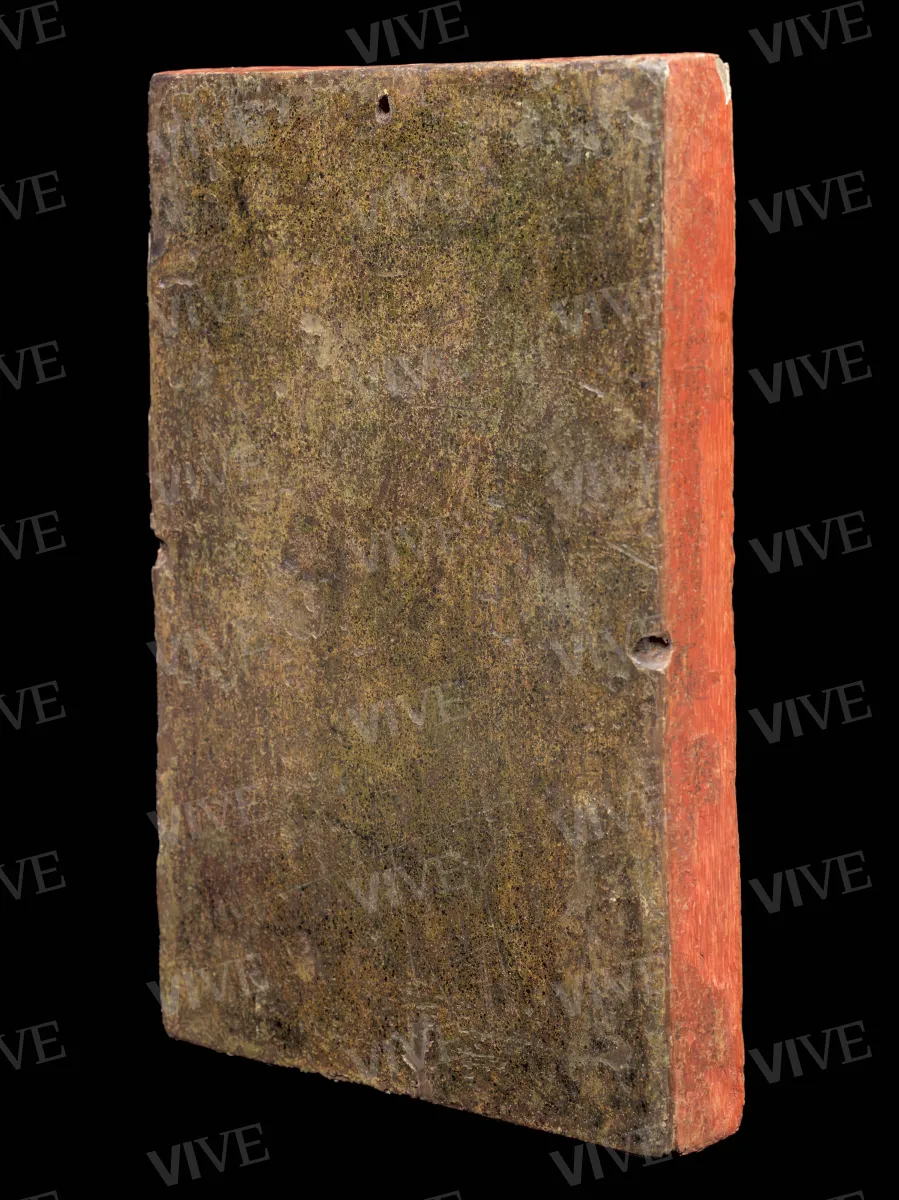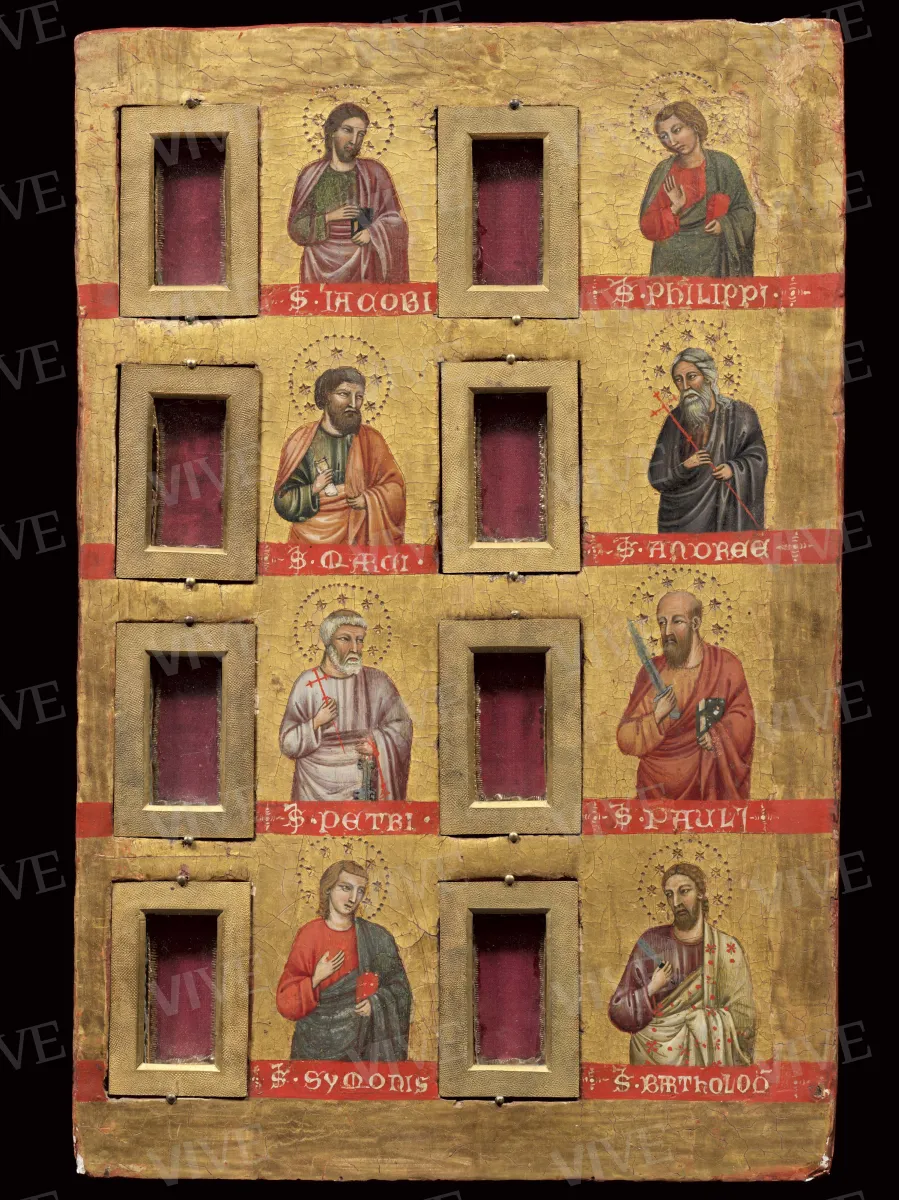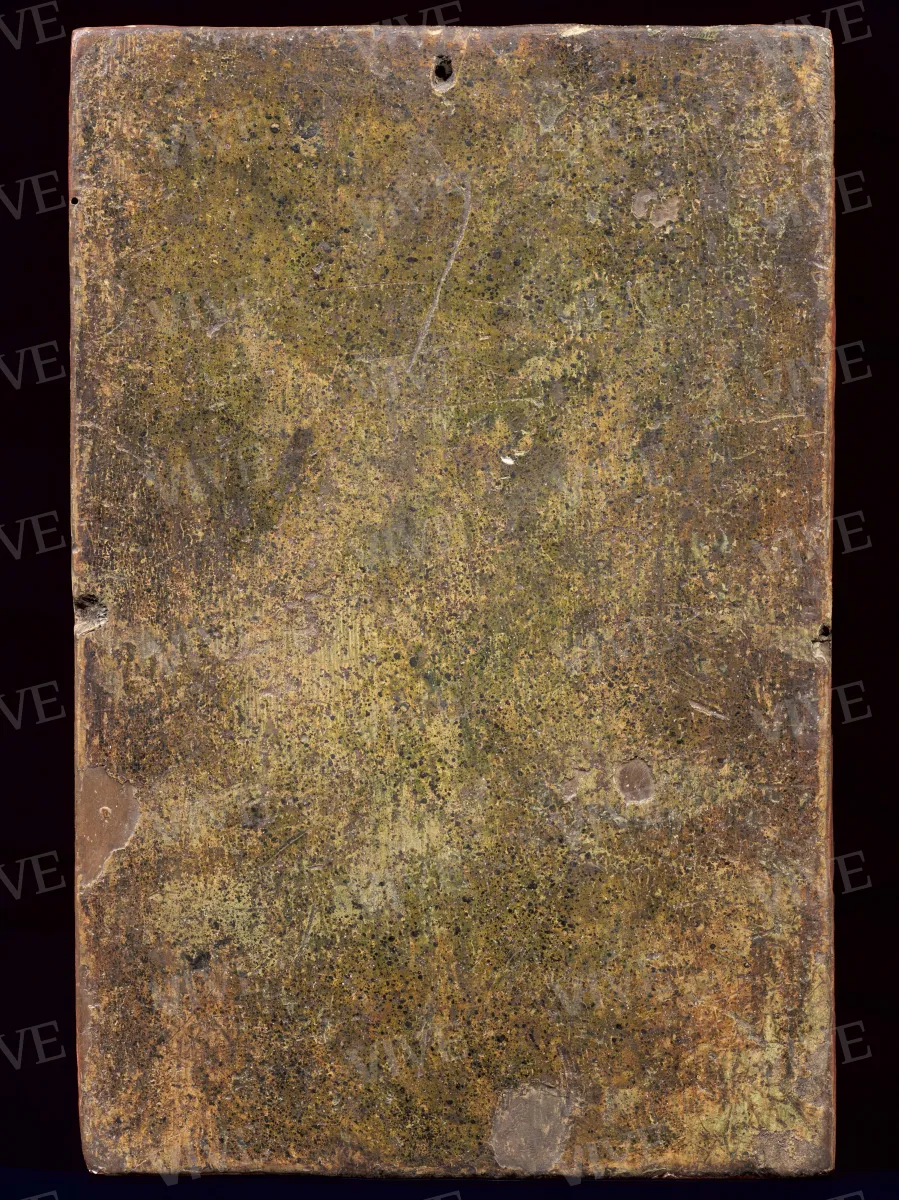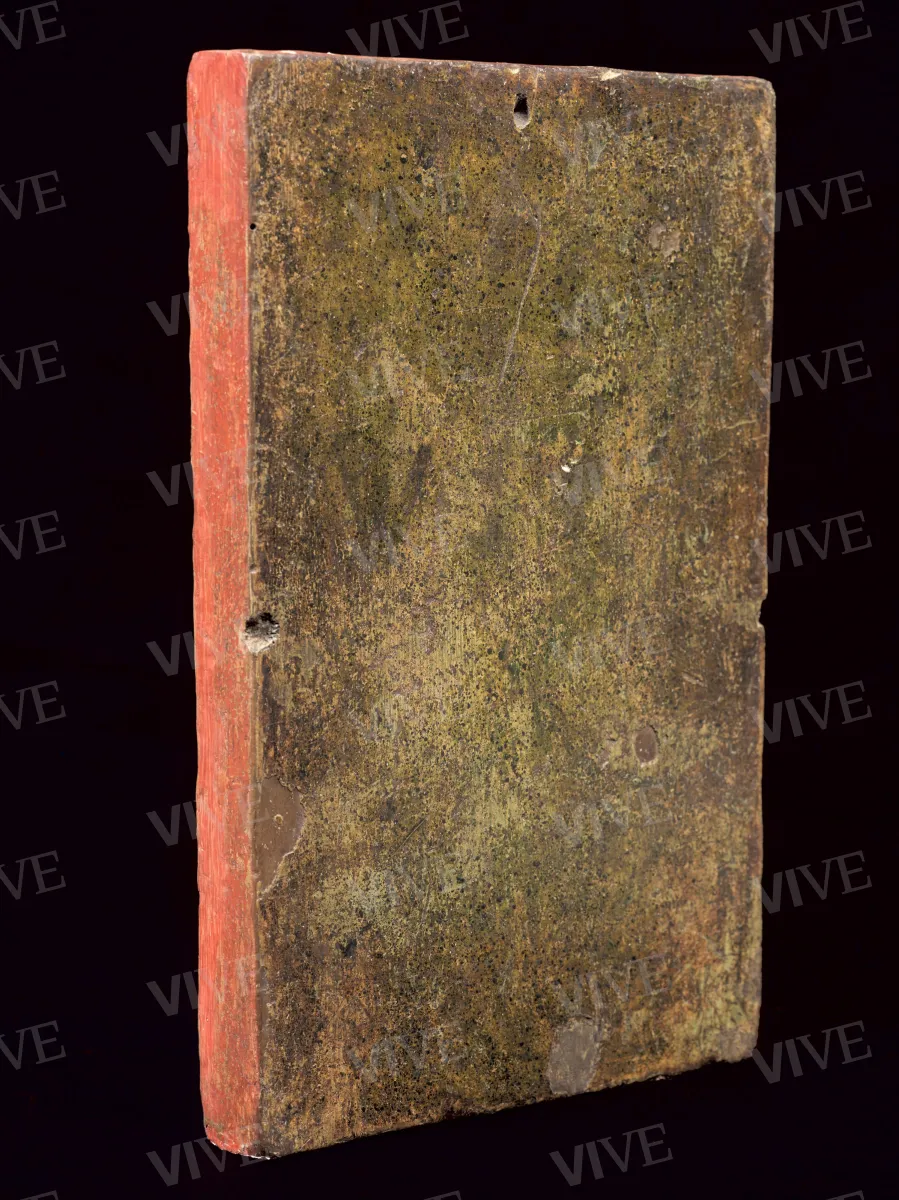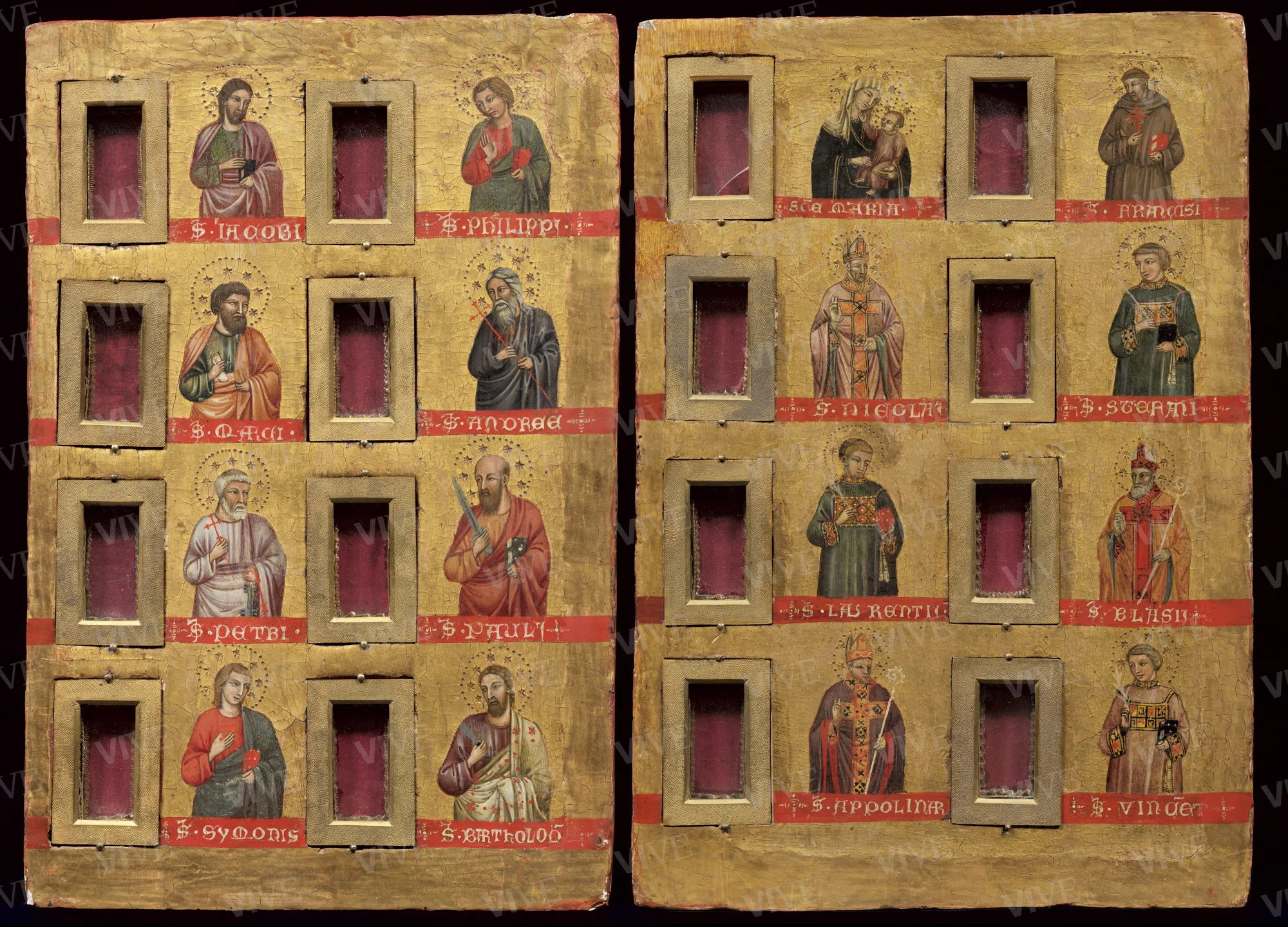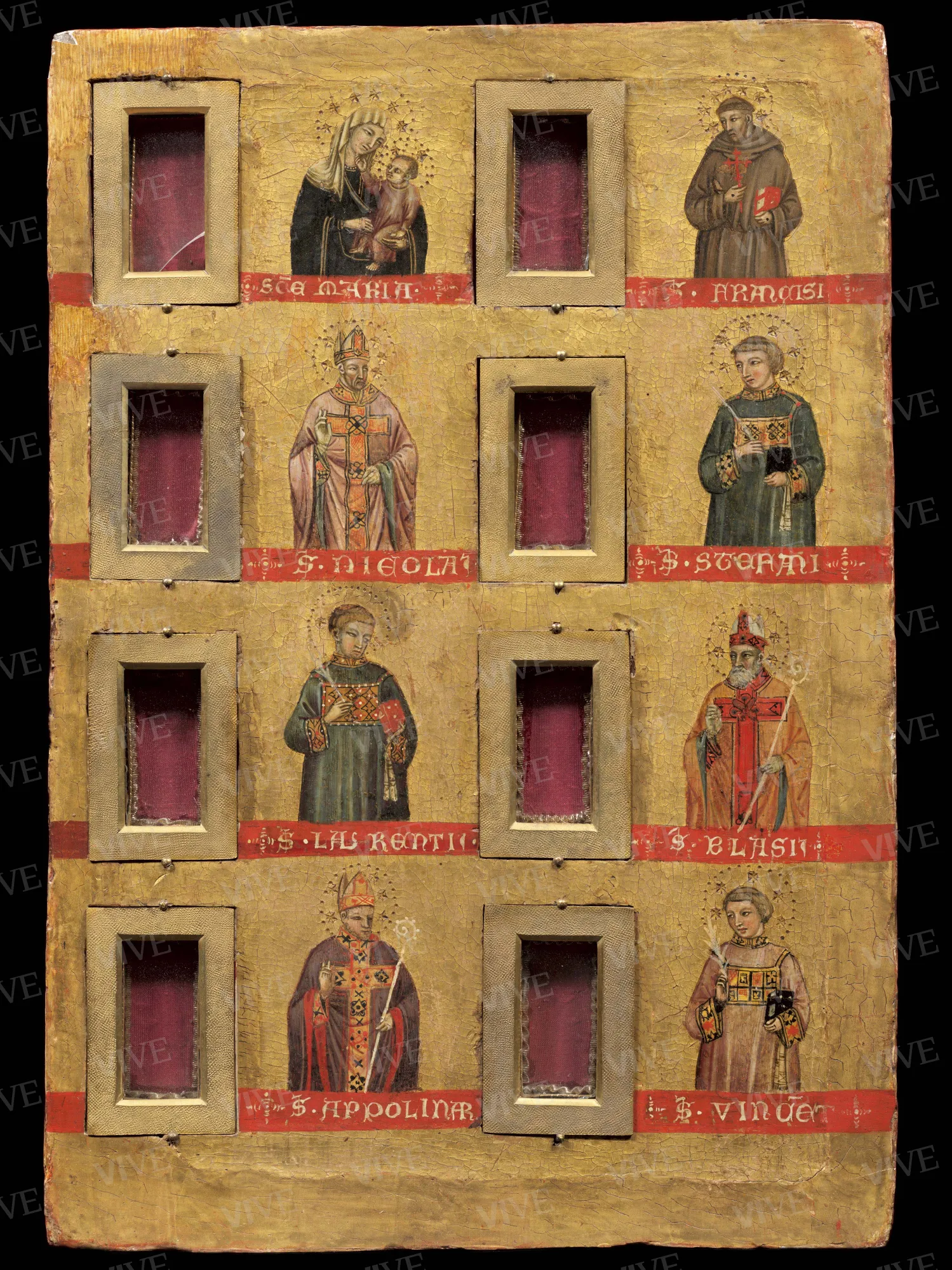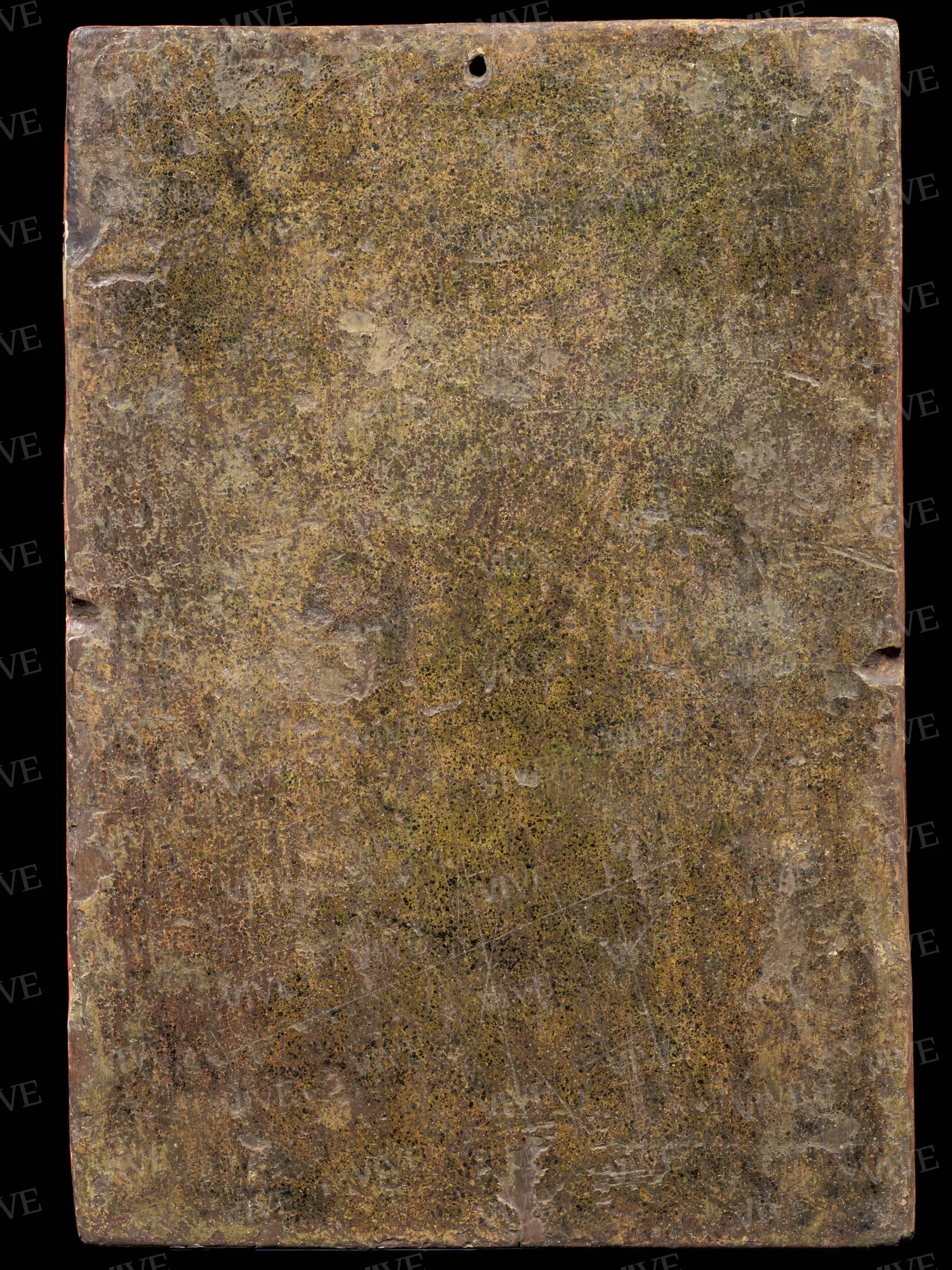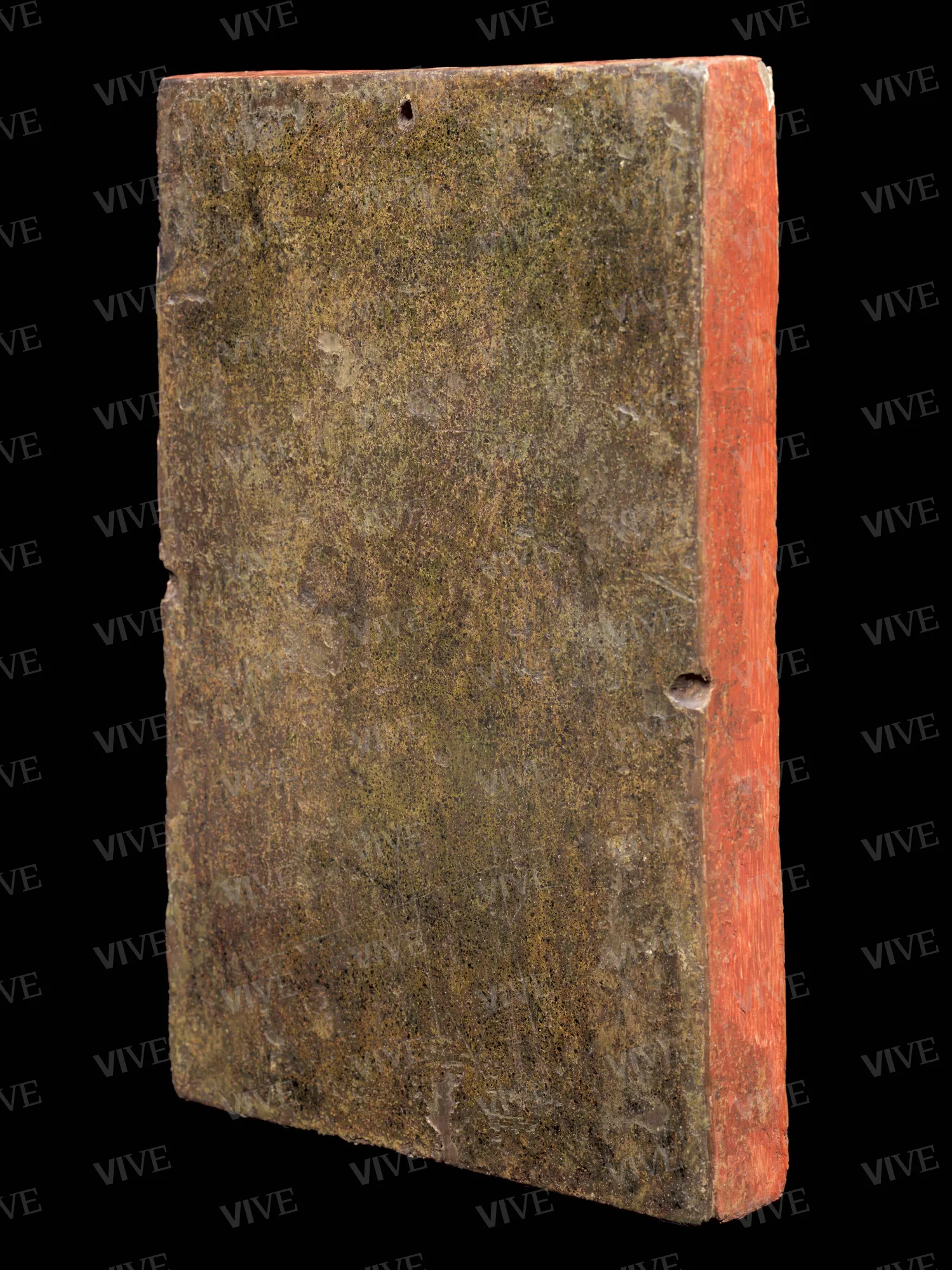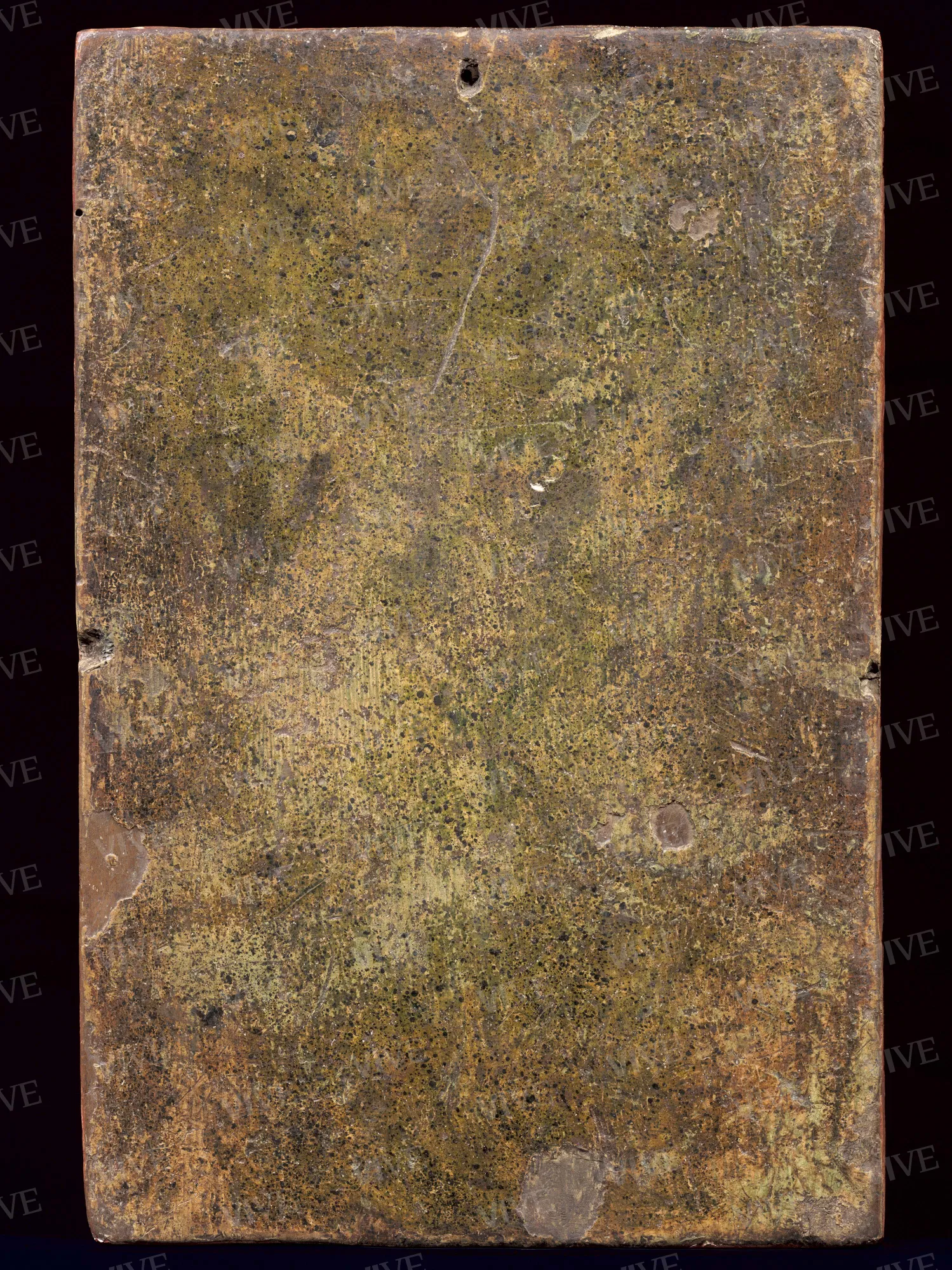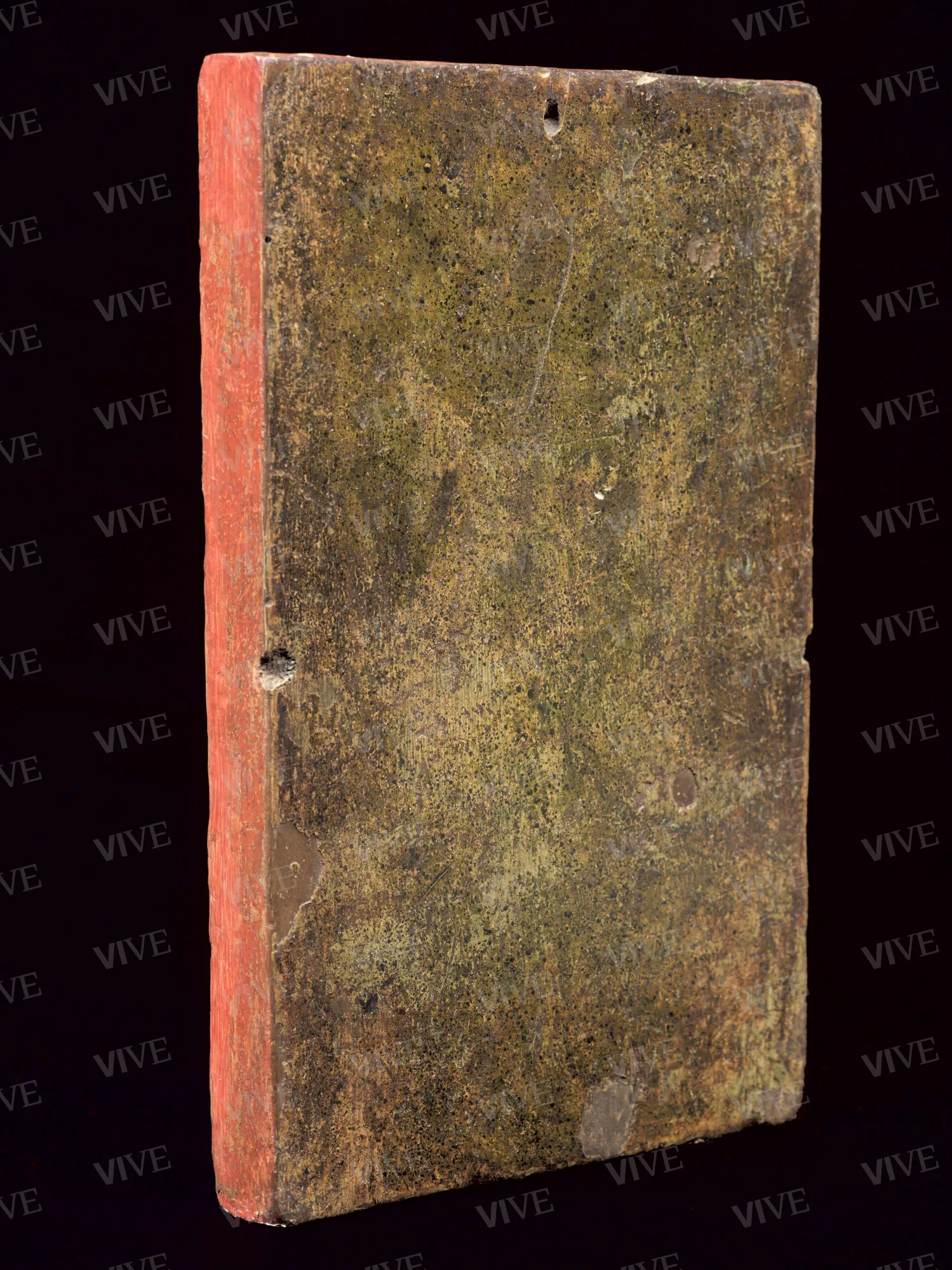Reliquary panels with saints
Cesi Master 1320s
Compartmented reliquary panels with figures of saints painted on a gold background. The relics were placed in the recesses, two on each of the four rows in both panels, now protected by a small pane of glass and covered inside with red fabric. The absence of hinges and the pronounced thickness, however, seem to rule out the possibility that the two panels were arranged to form a diptych.
Compartmented reliquary panels with figures of saints painted on a gold background. The relics were placed in the recesses, two on each of the four rows in both panels, now protected by a small pane of glass and covered inside with red fabric. The absence of hinges and the pronounced thickness, however, seem to rule out the possibility that the two panels were arranged to form a diptych.
Details of work
Catalog entry
This reliquary consists of two panels, both of which contain eight half-bust figures of saints, arranged in pairs and along four rows. All the figures are painted on a gold background and are easily identifiable not only because many are accompanied by their usual iconographic attributes, but also because their names are written in gold Gothic capitals on a red band that forms the base of each of the figures.
Next to the painted saints are recesses closed off by a glass door with a metal frame and lined in red fabric. These recesses once contained fragments of relics of the respective saint.
From top to bottom and left to right, the saints depicted in the panel inv. 10207 are Saint James, Saint Philip, Saint Mark, Saint Andrew, Saint Peter, Saint Paul, Saint Simon, and Saint Bartholomew. The panel inv. 10278 features the Madonna and Child, Saint Francis, Saint Nicholas of Bari, Saint Stephen, Saint Lawrence, Saint Blaise, Saint Apollinaris, and Saint Vincent.
Reconstruction of the form the two panels must originally have had together is problematic. The pronounced thickness of the wood, the absence of hinges, the slight asymmetry between the two pieces, and the peculiar arrangement of the relics on both supports—which cannot be assimilated to either the banded or porthole reliquary typology—make it unlikely that the tablets formed a diptych or were placed together in a compartmentalized structure (Pittiglio 2009, p. 271). It is therefore likely that the two panels were originally devised as a single artifact intended for private devotion (Riccardi 2018, p. 313).
The provenance of the two works is uncertain. The fact that Saint Francis is part of the group of saints makes if plausible that this was a Franciscan commission. The hypothesis that the artifact comes from the convent of Sant’Alò in Spoleto, as reported in an inventory card—OA/I 2000 (Pittiglio 2009, p. 272)—is now considered unfounded.
Longhi attributed the two panels to the Master of Santa Chiara in Montefalco, which was later reiterated by Antonino Santangelo (1948, p. 5), who identified other links with Umbrian miniature, the sphere of Meo da Siena, and the fresco painters of Santa Croce in Trevi and San Francesco in Montefalco. Santangelo also attributed the panels for relics in the Victoria and Albert Museum in London, the diptych in the Gemäldegalerie in Berlin, and the diptych in the Fogg Art Museum in Cambridge to the same artist.
Federico Zeri (1955, p. 7) and Filippo Todini (1989, p. 105) also espoused the same attribution, while Brandi, who in the 1935 exhibition on Rimini painters identified the artist generically as in some way related to Giuliano da Rimini (Brandi 1935, p. 10), likened the two reliquaries in Palazzo Venezia to the panel in the church of Santa Maria in Cesi, a work by the eponymous artist.
In more recent art history scholarship, this latter painter has been identified as the First Master of the Blessed Clare of Montefalco, first put forward by De Marchi (2007, p. 401) and then vigorously defended by Delpriori, who dated the two Roman tablets to the late 1420s (Delpriori 2015, p. 143).
The two paintings belonged to the Collezione Sterbini and were listed in the catalog of museum of Palazzo Venezia when they were donated by Giovanni Armenise in 1940.
Valentina Fraticelli
Entry published on 12 February 2025
State of conservation
Good.
Inscriptions
Inscriptions in gold letters on a red background distributed over four lines on the panel inv. 10207 recto:
"S[ANCTI] IACOBI S[ANCTI] PHILIPPI / S[ANCTI] MARCI. S[ANCTI] ANDREE / S[ANCTI] PETRI. S[ANCTI] PAULI / S[ANCTI] SYMONIS S[ANCTI] BARTHOLOM[EI]";
Inscriptions in gold letters on a red background distributed over four lines on the panel inv. 10208 recto:
"S[AN]CT]A MARIA S[ANCTI] FRANCIS[C]I / S[ANCTI] NICOLAI S[ANCTI] STEFANI / S[ANCTI] LAURENTII S[ANCTI] BLASII / S[ANCTI] APPOLINAR[IS] S[ANCTI] VINCEN(TI)".
Provenance
Rome, Palazzo Sterbini, Collezione Giulio Sterbini;
Rome, Collezione Giovanni Armenise;
Rome, Museo Nazionale di Palazzo Venezia, 1940.
Exhibition history
Rome, Museo Nazionale di Palazzo Venezia, Cipro e l’Italia al tempo di Bisanzio. L’Icona Grande di San Nicola this Stégis del XIII secolo restaurata a Roma, June 23–July 26, 2009, no. 17 (attribution to the First Master of the Blessed Clara da Montefalco).
Montefalco, Complesso Museale di San Francesco; Scheggino, Spazio Arte Valcasana; Spoleto, Museo Diocesano, Basilica di Sant’Eufemia and Rocca Albornoz, Museo Nazionale del Ducato; Trevi, Museo di San Francesco, Capolavori del Trecento. Il cantiere di Giotto, Spoleto e l’Appennino, June 24–November 4, 2018, no. 47 (attribution to the Master of Cesi).
References
Brandi Cesare (a cura di), Mostra della pittura riminese del Trecento, catalogo della mostra (Rimini, Palazzo dell’Arengo, 20 giugno-30 settembre 1935), Rimini 1935, pp. 10-11 (p. 10), n. 3;
Museo di Palazzo Venezia. Catalogo. 1. Dipinti, Santangelo Antonino (a cura di), Roma 1947, p. 5;
Catalogo del Gabinetto Fotografico Nazionale, 3, I dipinti del Museo di Palazzo Venezia in Roma, Zeri Federico (a cura di), Roma 1955, p. 7;
Todini Filippo, La pittura umbra dal Duecento al primo Cinquecento, I, Milano 1989, p. 105;
De Marchi Andrea, in Scarpa Sonino Annalisa, Lupo Michelangelo (a cura di), Fascino del bello. Opere d'arte dalla Collezione Terruzzi, Milano 2007, p. 401, n. I.1.;
Pittiglio Gianni, in Ηλιάδης Iωάννης Α. (a cura di), H Κύπρος και η Ιταλία την εποχή του Βυζαντίου Το παράδειγμα της εικόνας του Αγίου Νικολάου της Στέγης του 13ου αι. που συντηρήθηκε στη Ρώμη; Cipro e l’Italia al tempo di Bisanzio. L’icona Grande di San Nicola tis Stégis del XIII secolo restaurata a Roma, catalogo della mostra (Roma, Museo Nazionale del Palazzo di Venezia, Roma, 23 giugno-26 luglio 2009), Λευκωσία 2009, pp. 271-273, n. 17;
Delpriori Alessandro, La scuola di Spoleto. Immagini dipinte e scolpite nel Trecento tra Valle Umbra e Valnerina, Perugia 2015, p. 143;
Riccardi Lorenzo, in Garibaldi Vittoria, Delpriori Alessandro (a cura di), Capolavori del Trecento. Il cantiere di Giotto, Spoleto e l'Appennino, catalogo della mostra (Montefalco, Complesso Museale di San Francesco; Scheggino, Spazio Arte Valcasana; Spoleto, Museo Diocesano, Basilica di Sant’Eufemia e Rocca Albornoz, Museo Nazionale del Ducato; Trevi, Museo di San Francesco, 24 giugno-4 novembre 2018), Perugia 2018, pp. 312-313, n. 47.

